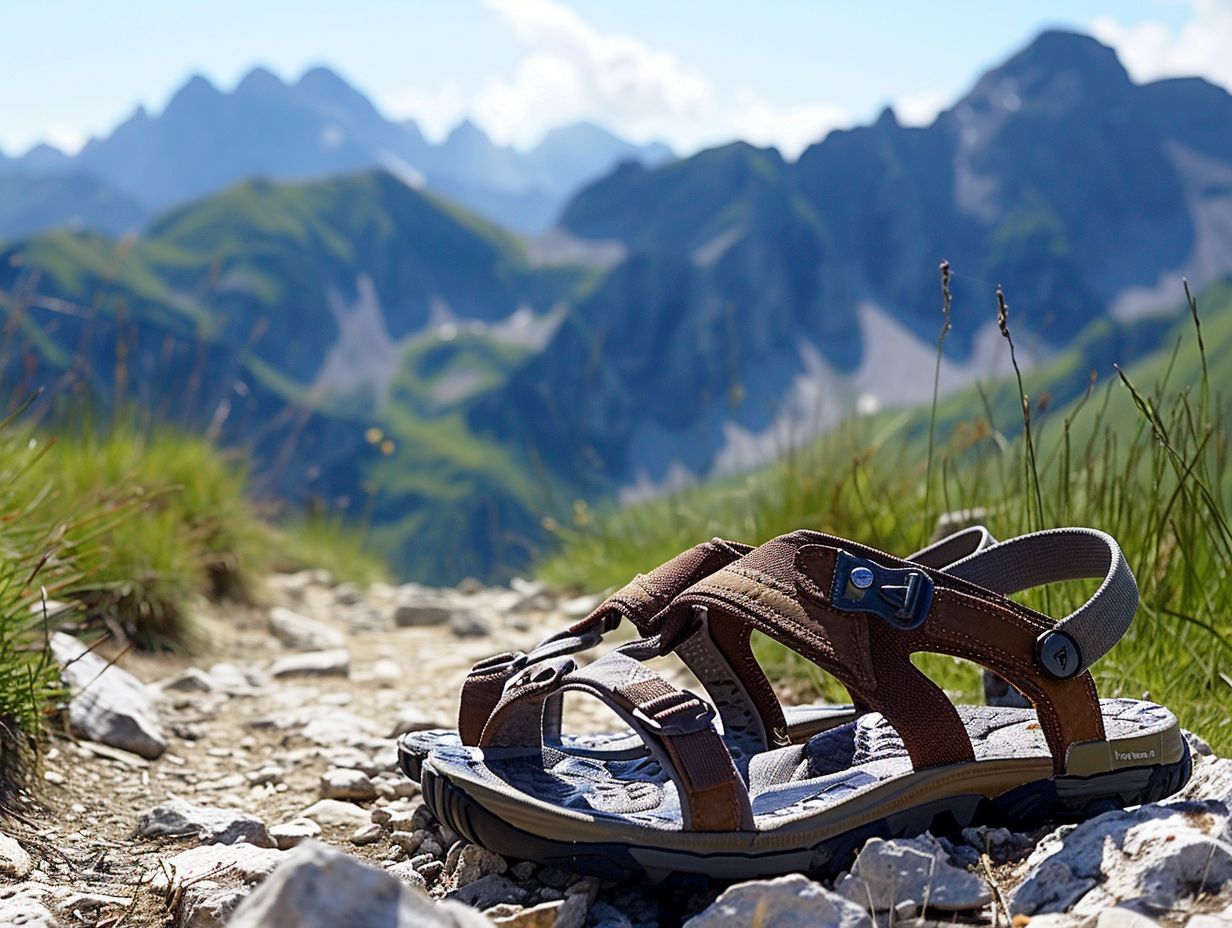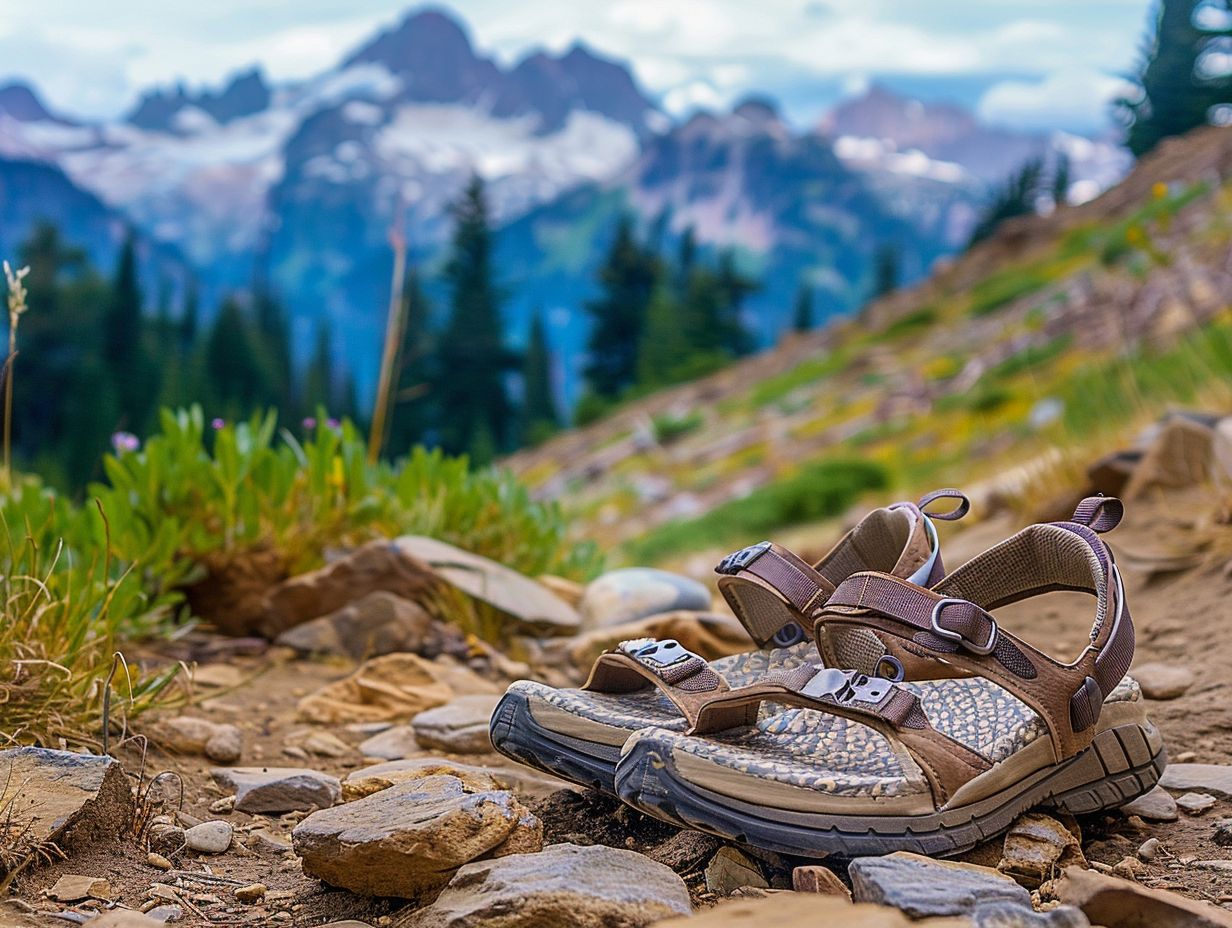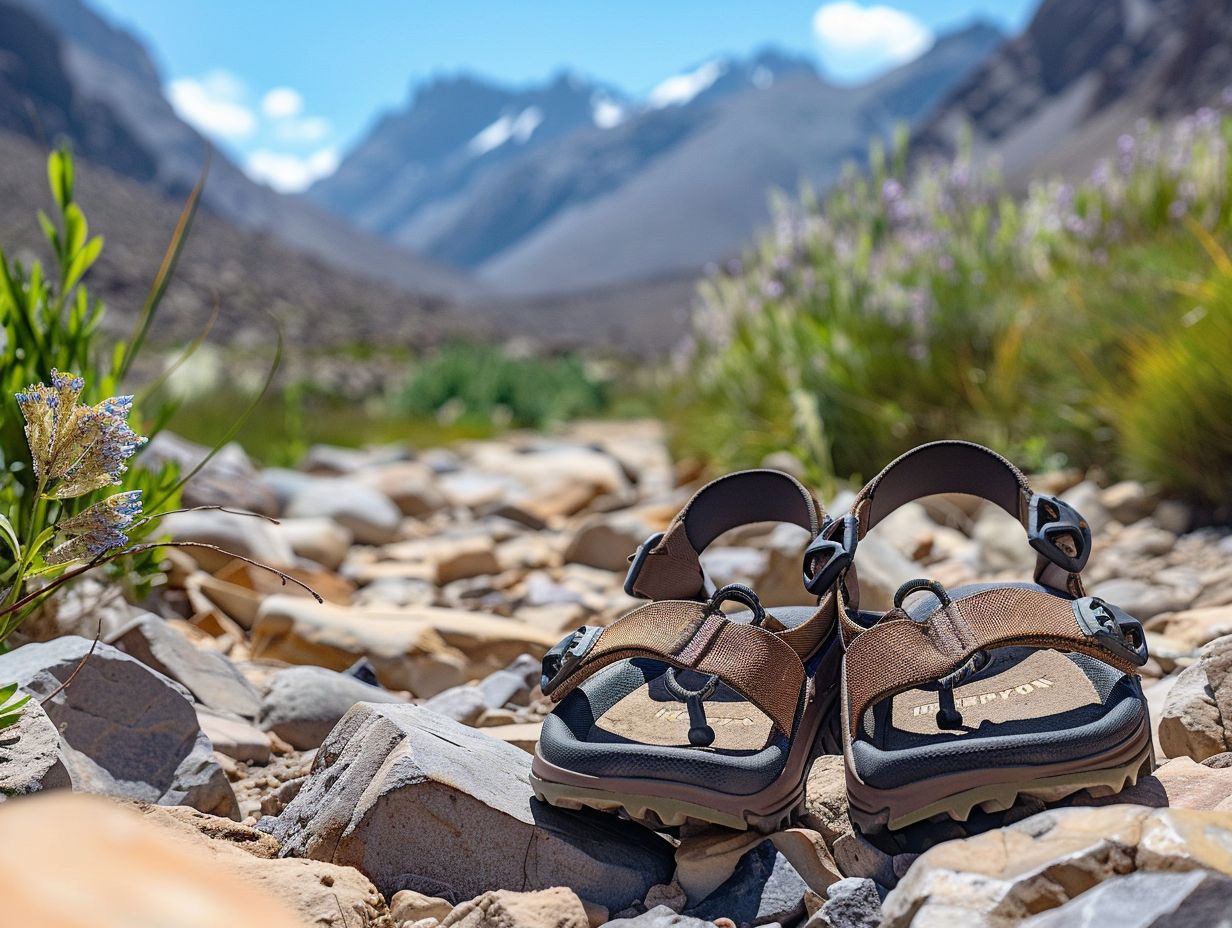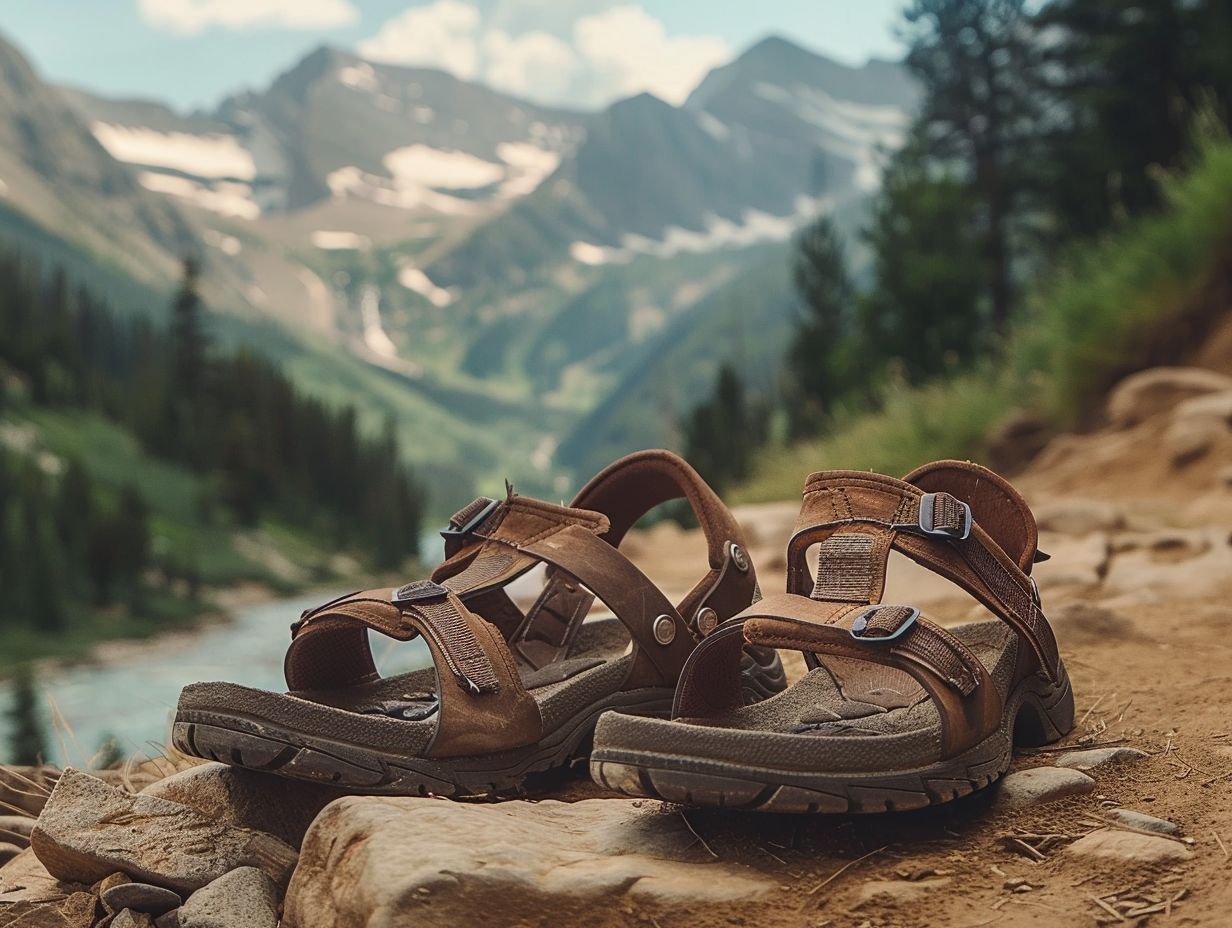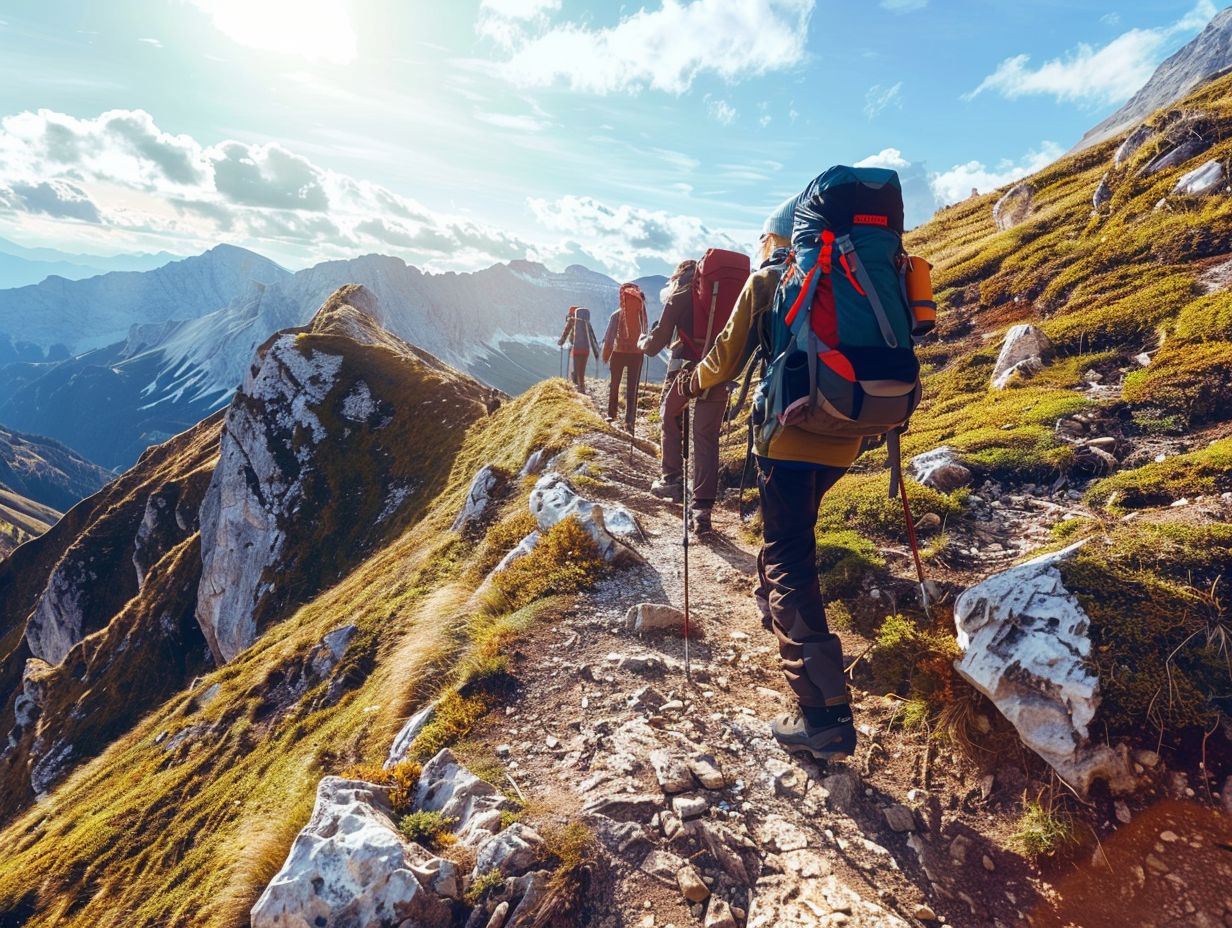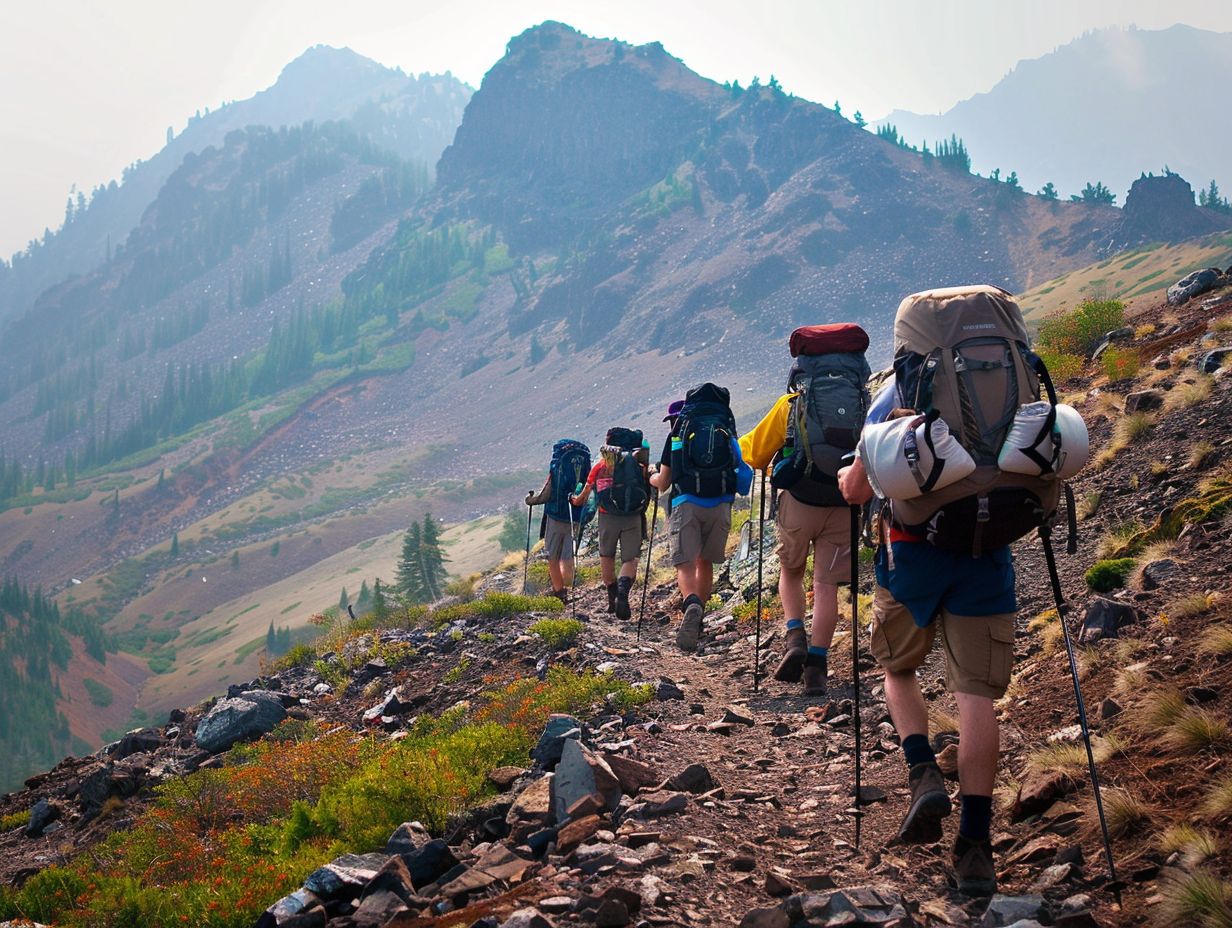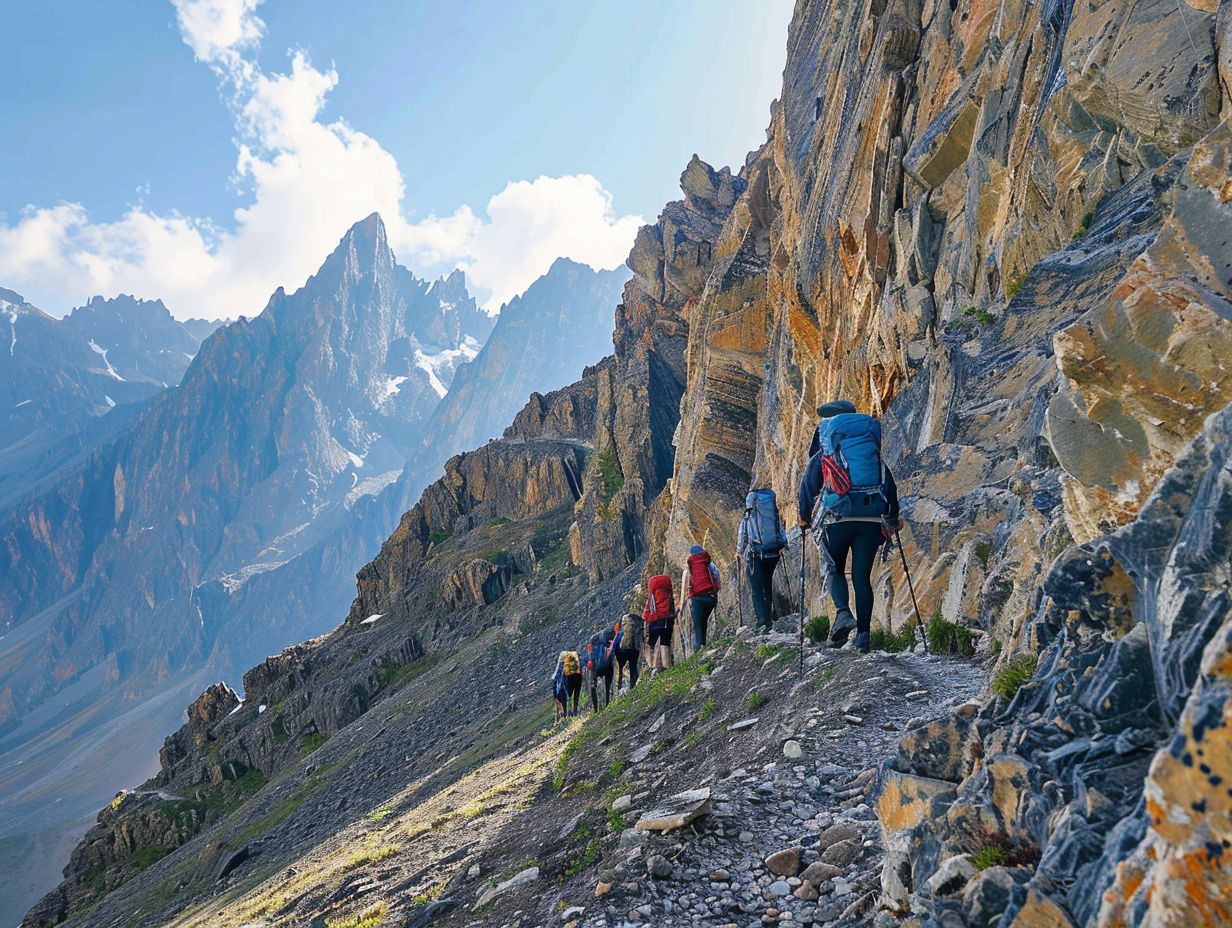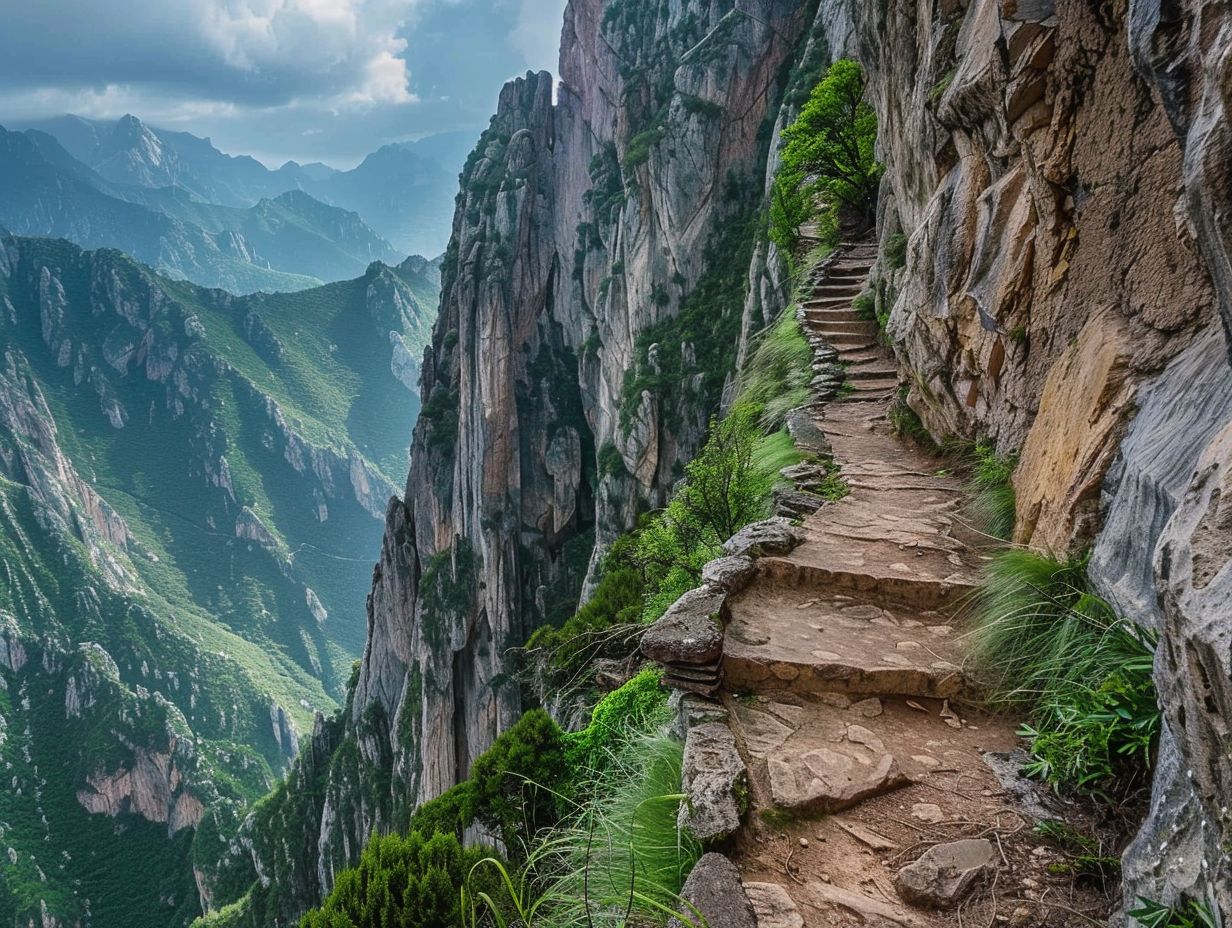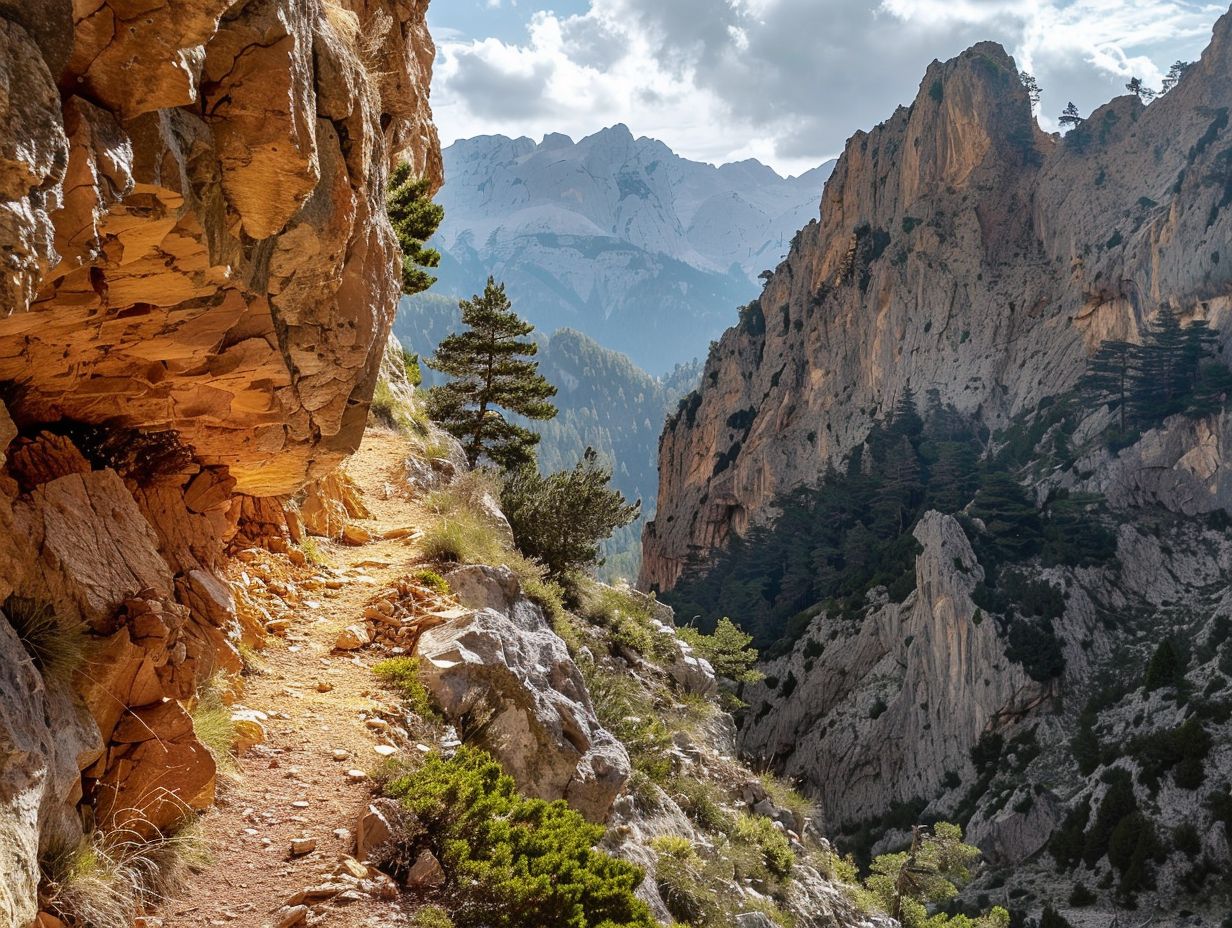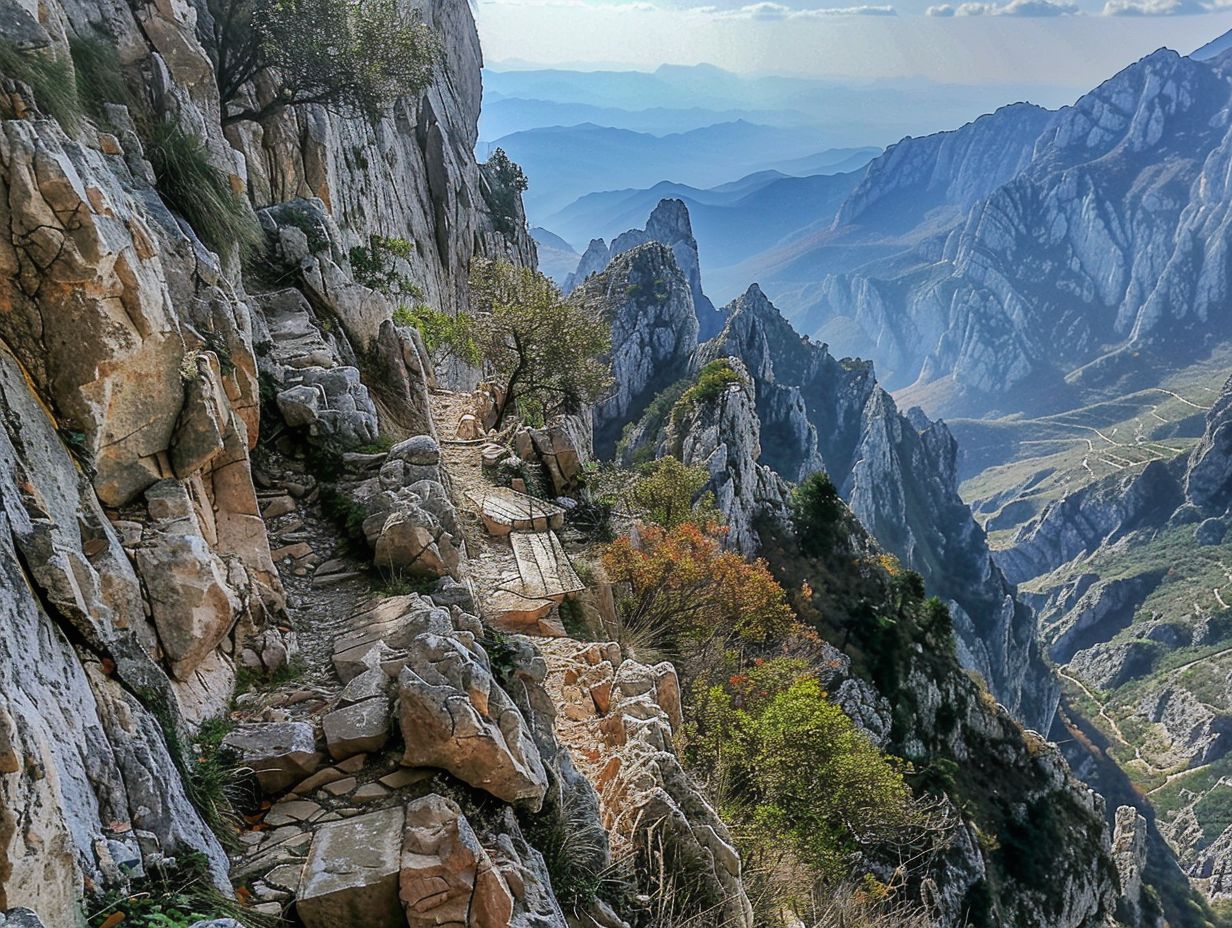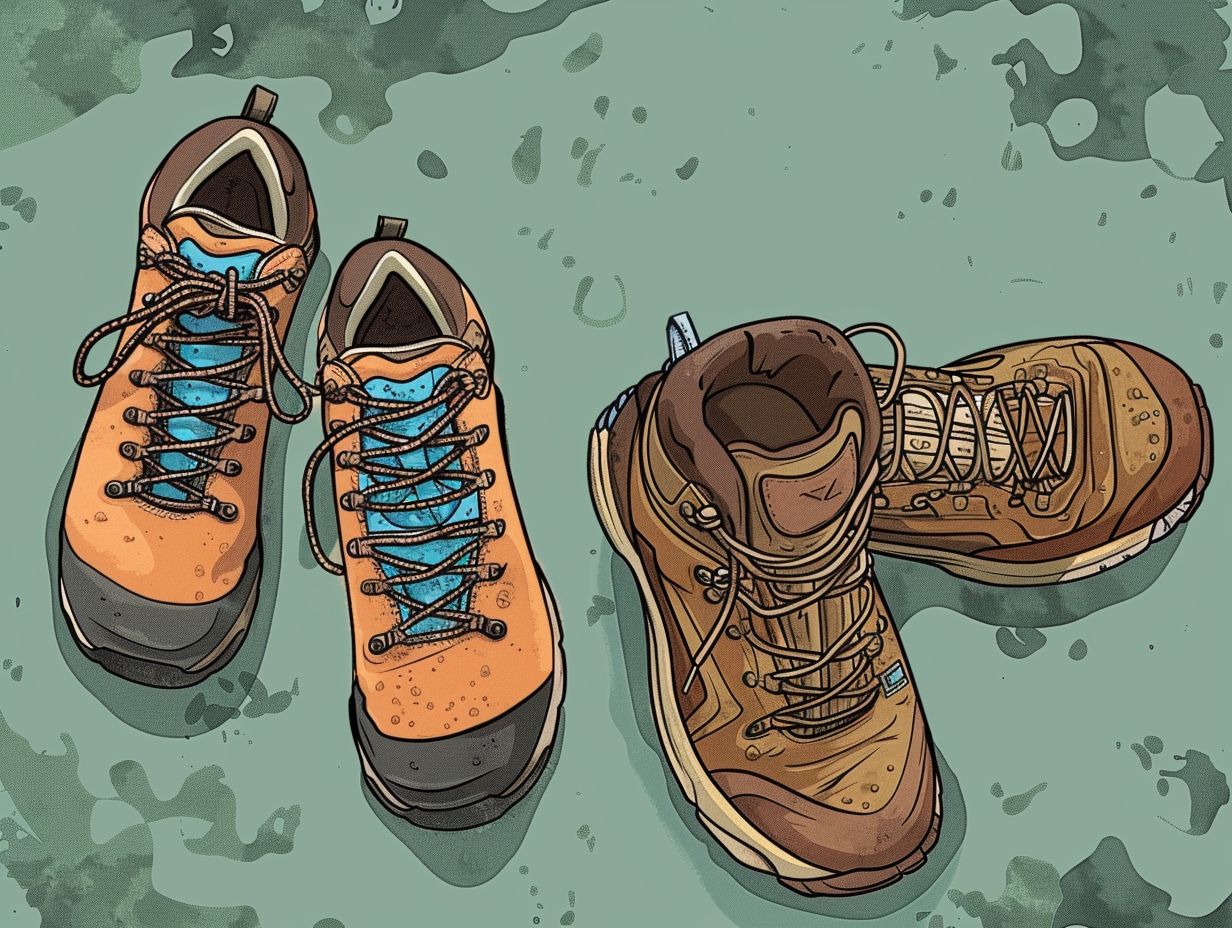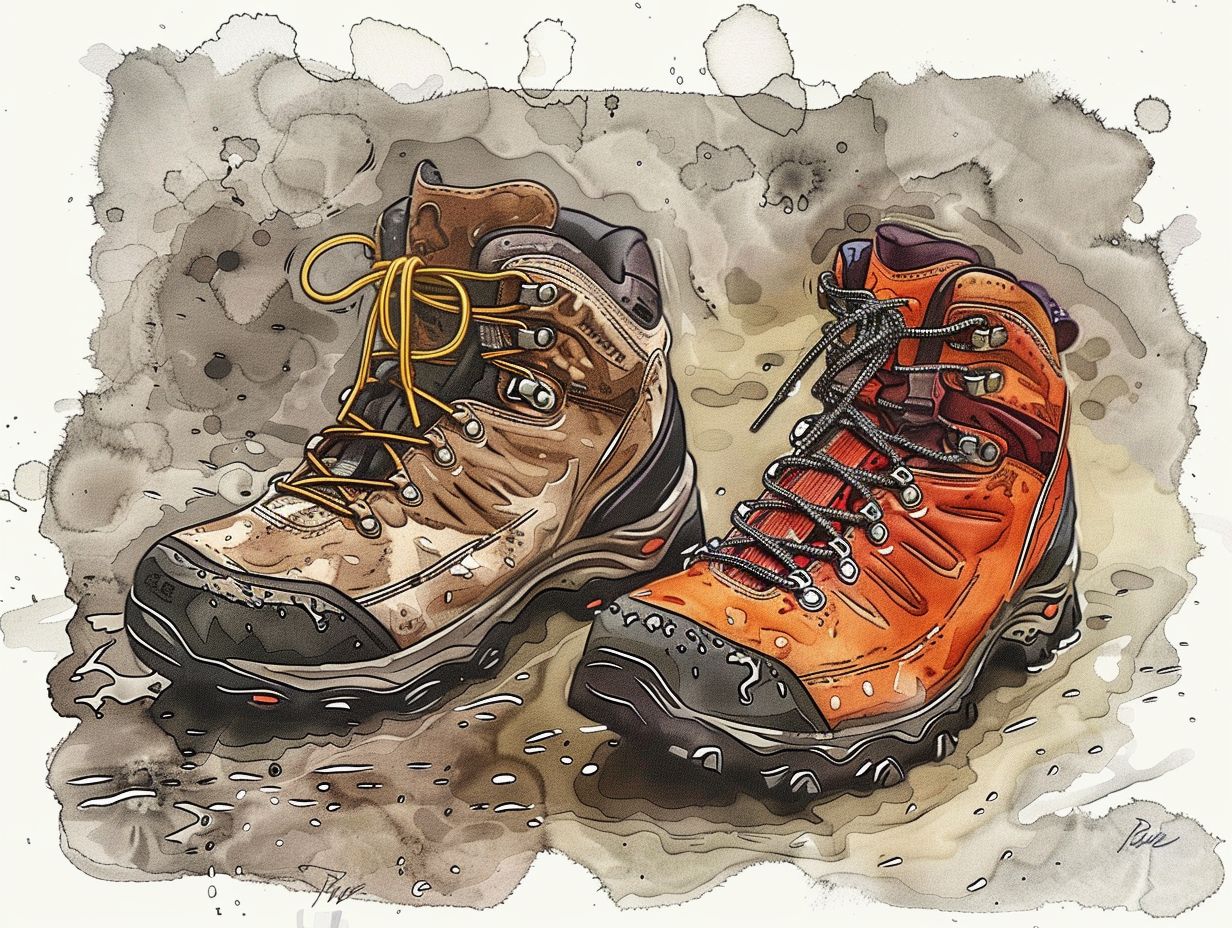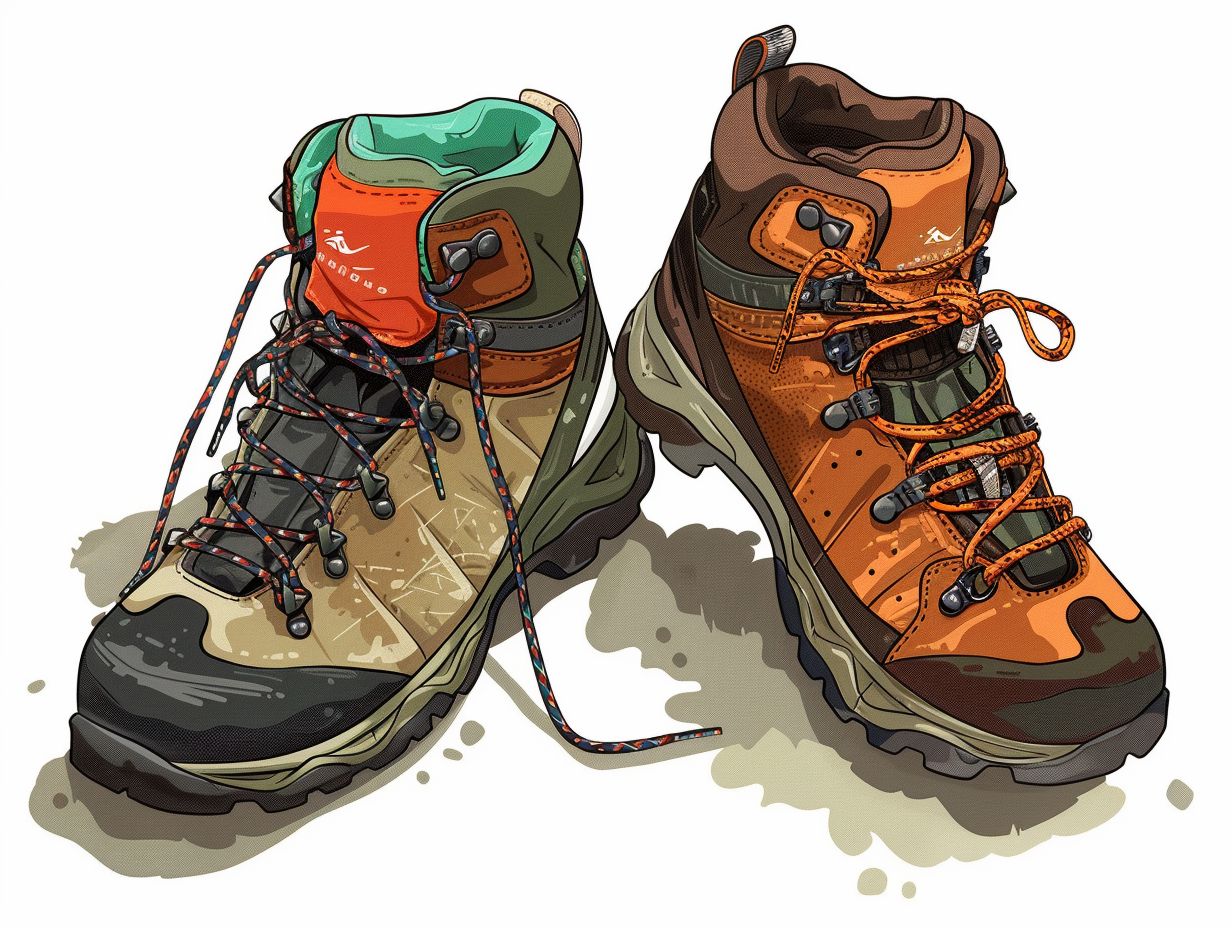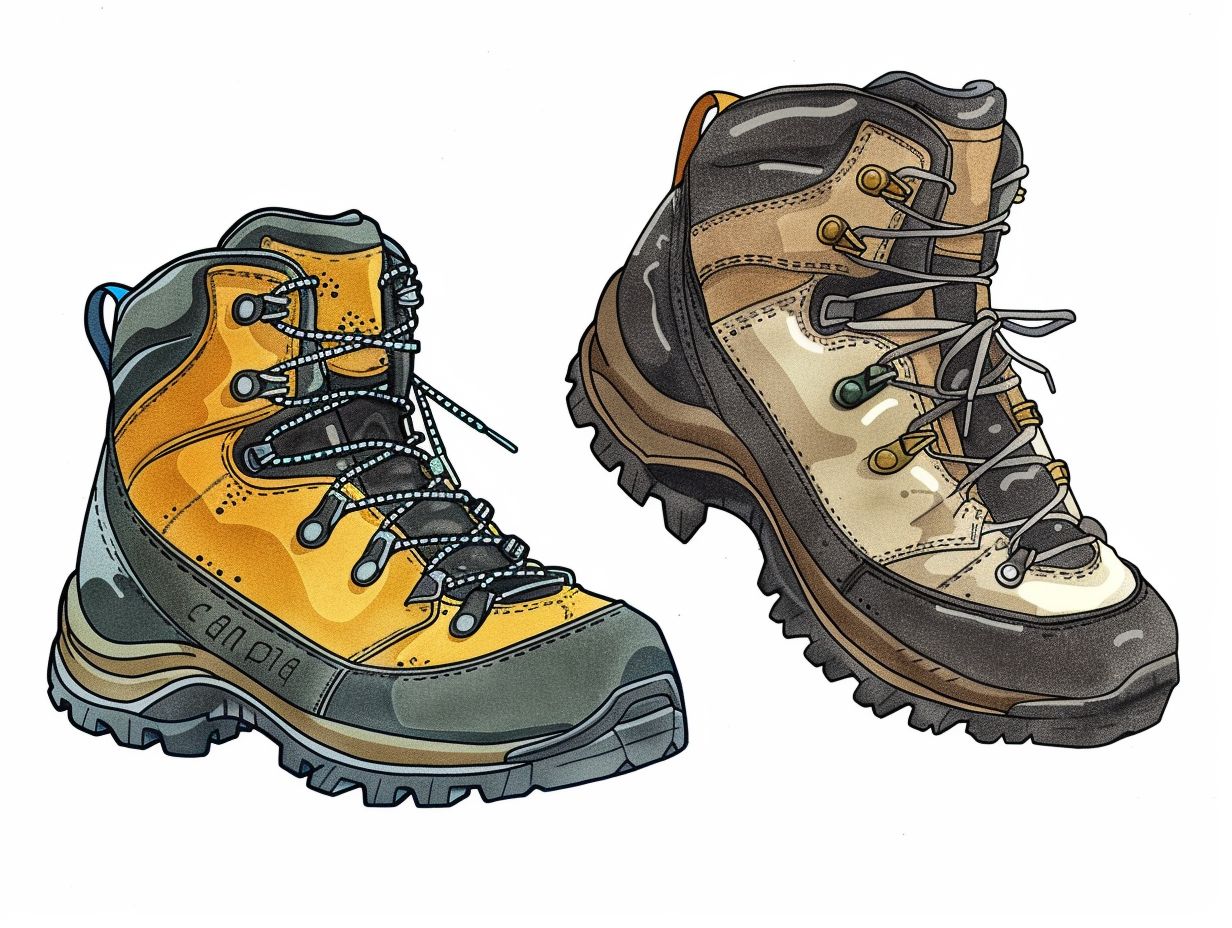If you’re an outdoor enthusiast torn between the thrill of mountaineering and the simplicity of hiking, this article is for you.
We’ll get right into the differences between these two adventurous activities. From the terrain and difficulty level to the required skills and equipment, we’ll break down everything you need to know to help you decide.
Whether you’re a seasoned climber or a casual hiker, we’ll also give you tips on how to prepare physically and mentally for your next outdoor adventure. So, lace up your boots and get ready to hit the trails!
What is Mountaineering?
Mountaineering is an exhilarating outdoor adventure that involves climbing mountains, exploring rugged terrains, and experiencing nature in its rawest form. It’s a challenging yet rewarding pursuit that allows you to push your physical and mental limits amidst majestic mountain landscapes.
Connecting with nature on a profound level, you often find yourself immersed in the tranquil beauty of untouched landscapes, far from the hustle of city life. The essence of mountaineering lies in the harmonious relationship between humans and the natural world, where every step you take is a dance of exploration. The mountains beckon you with their untamed beauty, offering a canvas for discovery and self-discovery amidst the vast expanse of rocky peaks and swirling mists.
What Are the Different Types of Mountaineering?
In mountaineering, you’ve got all sorts of flavors to choose from like rock climbing, ice climbing, alpine climbing, and expedition climbing. Each type brings its own set of challenges and demands different skills. Whether you’re conquering towering peaks or navigating tricky terrains up high, there’s something for every outdoor enthusiast.
- Rock climbing is all about scaling those vertical rock faces using ropes, harnesses, and climbing gear. You’ll need some technical know-how like belaying and lead climbing to tackle it.
- Ice climbing is all about tackling frozen waterfalls and icy cliffs, so get ready to flex those muscles and show off your skills with ice axes and crampons.
- Alpine climbing mixes things up with a blend of rock and ice climbing in mountain settings. You’ll need mad skills in route finding and avalanche safety to take this one on.
- Expedition climbing is all about those high-altitude adventures, where you’ll need serious endurance to handle the thin air, crazy weather, and long stints at high altitudes.
What is Hiking?
When you hit the trails for a hike, you’re diving into the great outdoors, surrounded by nature’s wonders like mountains, forests, and wild landscapes. It’s a perfect way to soak in the beauty of nature, keep yourself in shape, and uncover breathtaking views while enjoying the peace and quiet outside.
Hiking lets you escape the daily grind and lose yourself in the tranquility of the wilderness. It’s a chance to ditch the screens, take in the fresh mountain air, and marvel at the unspoiled beauty around you. Not only does it help you unwind and destress, but hiking also does wonders for your fitness, burning calories, boosting your heart health, and toning up those muscles. Whether you’re sticking to the marked trails or blazing your own path, each hike brings a brand new adventure waiting to be explored.
What Are the Different Types of Hiking?
Hiking offers a range of experiences, from backpacking to trail running, that cater to different preferences and fitness levels. Whether you enjoy multi-day backpacking trips, challenging trail runs, or endurance training on tough terrain, there’s something in hiking for you.
When you go backpacking, you get to fully immerse yourself in nature, carrying all your gear on your back and camping under the stars in remote spots.
Trail running, on the other hand, gives you a fast-paced and dynamic adventure, perfect for those who love a cardiovascular challenge across various terrains.
If you’re into endurance training, you’ll be pushing your limits with long-distance hikes featuring steep inclines and tricky obstacles, testing both your mental and physical resilience.
What Are the Differences Between Mountaineering and Hiking?
In terms of mountaineering and hiking, there are some key differences to keep in mind. Mountaineering typically involves tackling rugged and technical terrain. You’ll need specialized gear like ropes, harnesses, and crampons, and be ready to face higher altitudes, glaciers, crevasses, and unpredictable weather. So, advanced mountaineering skills and experience are a must to stay safe, especially with the higher risks involved.
On the flip side, hiking is usually done on established trails with different levels of difficulty. All you really need are some basic essentials like good shoes, the right clothes, and some navigation tools. It’s a more laid-back outdoor adventure compared to the intense challenges of mountaineering.
1. Terrain and Difficulty Level

In terms of mountaineering and hiking, the key difference is all about the challenges they throw at you. Mountaineering means tackling rugged and steep terrain that demands serious skills, endurance, and grit to conquer those high peaks. On the other hand, hiking usually sticks to established trails with varying difficulty levels, catering to a wider range of outdoor enthusiasts.
If you’re into mountaineering, get ready for some serious physical and mental tests. You’ll be facing vertical ascents, unpredictable weather, and tricky obstacles like crevasses and ice walls on your way to the peak. Meanwhile, hikers might deal with rocky paths and river crossings, which, while tough in their own way, are usually not as intense as the sheer cliffs and icy slopes that mountaineers have to tackle.
But whether you’re a mountaineer or a hiker, the end goal is always the same: reaching the summit. It’s just that you’ll be taking vastly different paths and preparations to get there.
2. Required Skills and Experience
In mountaineering, you need specialized skills like rock climbing, glacier travel, and rope techniques because climbing can get pretty technical. Hiking, on the other hand, is less about technical know-how and more about being physically fit, having endurance, and adjusting to different altitudes to have a safe and fun time outdoors.
Whether you’re climbing mountains or hitting the trails, staying fit and active is key. Climbers need strength and flexibility to handle tough terrain, while hikers need stamina for those long treks. Knowing about altitude sickness and acclimatization is crucial to avoid any risky situations from climbing up too fast.
Being able to navigate, like reading maps and using a compass, is a great skill to have when you’re out in the mountains. Experienced adventurers always prep ahead of time, packing the right gear like clothes, food, water, and emergency supplies to handle anything unexpected that comes their way.
3. Equipment and Gear
When you’re out mountaineering, you’ll need specialized gear like ropes, harnesses, carabiners, and crampons to keep you safe and moving efficiently on those challenging climbs. But if you’re hitting the trails for a hike, all you really need are some reliable hiking boots, a sturdy backpack, and a hydration system to keep you comfortable and supported while tackling trails of all kinds.
Making sure you have the right gear is key for both mountaineering and hiking adventures. Mountaineers count on their ropes and harnesses to keep them secure on those steep slopes, while carabiners and crampons help them navigate tricky terrain. On the flip side, hikers are all about the comfort and durability of their hiking boots, giving them stability and protection throughout their journey. And don’t forget a well-fitted backpack – it’s a must-have for both activities, carrying essentials like water, snacks, and emergency supplies.
4. Time and Duration
When you’re planning a mountaineering expedition, you know you’re in for a multi-day or even multi-week adventure. It’s all about that meticulous planning, prepping your gear, and adjusting to those high altitudes.
But hey, if you’re more into hiking, you’ve got a bit more wiggle room. Hiking doesn’t tie you down to a strict schedule or require a ton of fancy gear and technical know-how like mountaineering does. With hiking, you can keep it simple and head out on shorter trips with just the basics.
Whether you’re up for a quick day hike on a nearby trail or want to tackle an overnight backpacking trip, hiking gives you the freedom to choose. It’s the perfect option for folks who crave outdoor fun without committing to those long mountaineering expeditions.
5. Safety and Risk Factors
In mountaineering and hiking, safety should be your number one priority. There are risks like altitude sickness, extreme weather conditions, and wildlife encounters that you need to carefully consider and prepare for. Mountaineers face challenges like glacier travel and technical climbing, while hikers need to stay alert about trail conditions, navigation, and wildlife safety.
Altitude sickness can hit you at different altitudes, causing symptoms like headaches, nausea, and dizziness that are no joke for climbers and hikers. Make sure you know the signs of altitude sickness and acclimate properly to stay safe during your climb.
The weather can be unpredictable, with sudden storms or extreme temperature changes throwing you for a loop. Make sure you have the right gear and a flexible plan to handle any weather curveballs. Wildlife encounters can be exciting but also risky. Knowing how to react to bears, snakes, or other animals is crucial for keeping everyone safe on the mountain or trail.
Which One is Right for You?
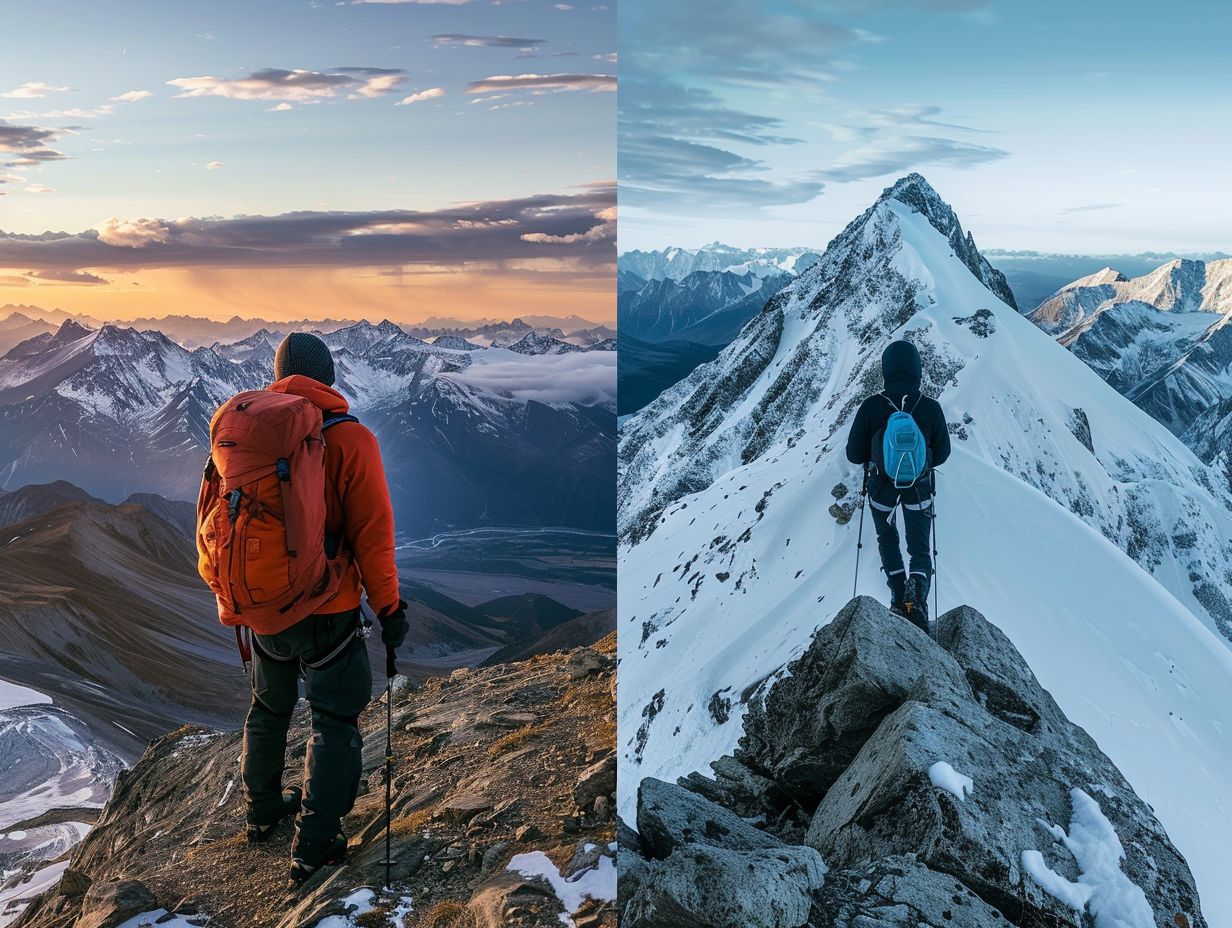
In terms of choosing between mountaineering and hiking, it really depends on your experience level, fitness goals, and how much you enjoy a good challenge. If you’re all about that adrenaline rush, love the idea of climbing peaks, and have the skills to back it up, then mountaineering could be your jam. But if you’re more into scenic trails, easy-going nature walks, and activities that cater to different fitness levels, then hiking might be the perfect fit for you.
Mountaineering throws a mix of physical challenges, mental toughness, and that awesome feeling of triumph when you reach the top of those towering peaks. It requires some serious technical skills, plenty of endurance, and a willingness to push through some rough conditions. On the flip side, hiking offers a more inclusive experience for people of all fitness levels, letting you explore different terrains at your own speed. Whether you’re itching for the excitement of scaling steep cliffs or craving the peace of wandering through lush forests, your choice between mountaineering and hiking is going to play a big role in shaping your outdoor adventures.
Factors to Consider Before Choosing Between Mountaineering and Hiking
When you’re gearing up for a mountaineering or hiking adventure, think about a few things. Consider your physical fitness, how comfortable you are in the wilderness, whether you’re okay with heights, and if you have enough time to prep and train. Having a grip on these factors will help you figure out if mountaineering or hiking is more your speed when it comes to outdoor fun.
To tackle mountaineering or hiking like a pro, being prepared is key. For mountaineering, you’ll need technical skills like handling ropes, ice climbing, and navigating tricky terrain. Hiking, on the other hand, calls for the right footwear, backpacking gear, and some map-reading skills. Your fitness level is crucial for both activities – mountaineering needs endurance and strength for those high altitudes, while hiking demands stamina for those long treks.
Having some experience in the wild can really come in handy. It gives you a taste of dealing with unexpected situations and emergencies that might pop up. Plus, being up for challenges and ready to push yourself is essential for both mountaineering and hiking.
How to Prepare for Mountaineering and Hiking?
Effective preparation is key for both mountaineering and hiking adventures. You need to focus on physical and mental conditioning, get specialized training, and make sure you have all the essential gear and equipment. Whether you’re getting ready for a tough climb or a relaxing hike, thorough preparation is the key to a safe, enjoyable, and memorable outdoor experience.
Start planning your journey well ahead of time. Evaluate your fitness level and set achievable goals based on the terrain difficulty. Regular exercise that targets cardiovascular endurance, strength, and agility is crucial for building up the physical stamina you’ll need. Don’t forget about the mental side of things – it’s a big part of tackling challenges during treks. Get expert advice to customize your training regimen to fit the specific demands of your expedition, and invest in top-notch gear that’s suited to the terrain and weather conditions you’ll be facing.
Physical and Mental Preparation
In the world of mountaineering and hiking, you’ve got to get yourself physically and mentally ready for the challenges ahead. That means hitting the gym, the trails, or whatever gets your body moving to build up that endurance. And don’t forget about getting your mind in gear too – you’ve got to be mentally tough to conquer those obstacles and adapt to those high altitudes. Strengthening your body and mind is key to making sure you’re all set for your outdoor escapades.
When you stick to a regular endurance training routine, you’re not just boosting your cardio fitness – you’re also building up your muscles and stamina. Acclimatizing to those higher altitudes is a must to ward off altitude sickness and perform your best on those tough terrains. And let’s not forget about the mental game – practicing mindfulness and visualization techniques can keep you sharp and motivated through those long journeys. When you’ve got both your body and mind in sync, you’re setting yourself up for a safe and successful mountaineering or hiking adventure.
Training and Conditioning
When you’re gearing up for mountaineering and hiking trips, getting in shape and mastering key skills are crucial. Training and conditioning are key players in this prep game, helping you boost your fitness levels, sharpen your survival instincts, and perfect those outdoor techniques you’ll need in the wild.
By committing to a regular training routine, you’re not only strengthening those muscles but also building up your endurance for those long hikes and climbs. Acquiring survival skills through training will arm you with the know-how to handle unexpected situations and stay cool under pressure.
Master those rope skills and navigation techniques, and you’ll be breezing through your expeditions with ease. This way, you’ll stay safe and have a blast outdoors. Remember, it’s the whole package that counts – from training and fitness to survival skills and technique mastery, it all adds up to a killer mountaineering and hiking experience.
Essential Gear and Equipment
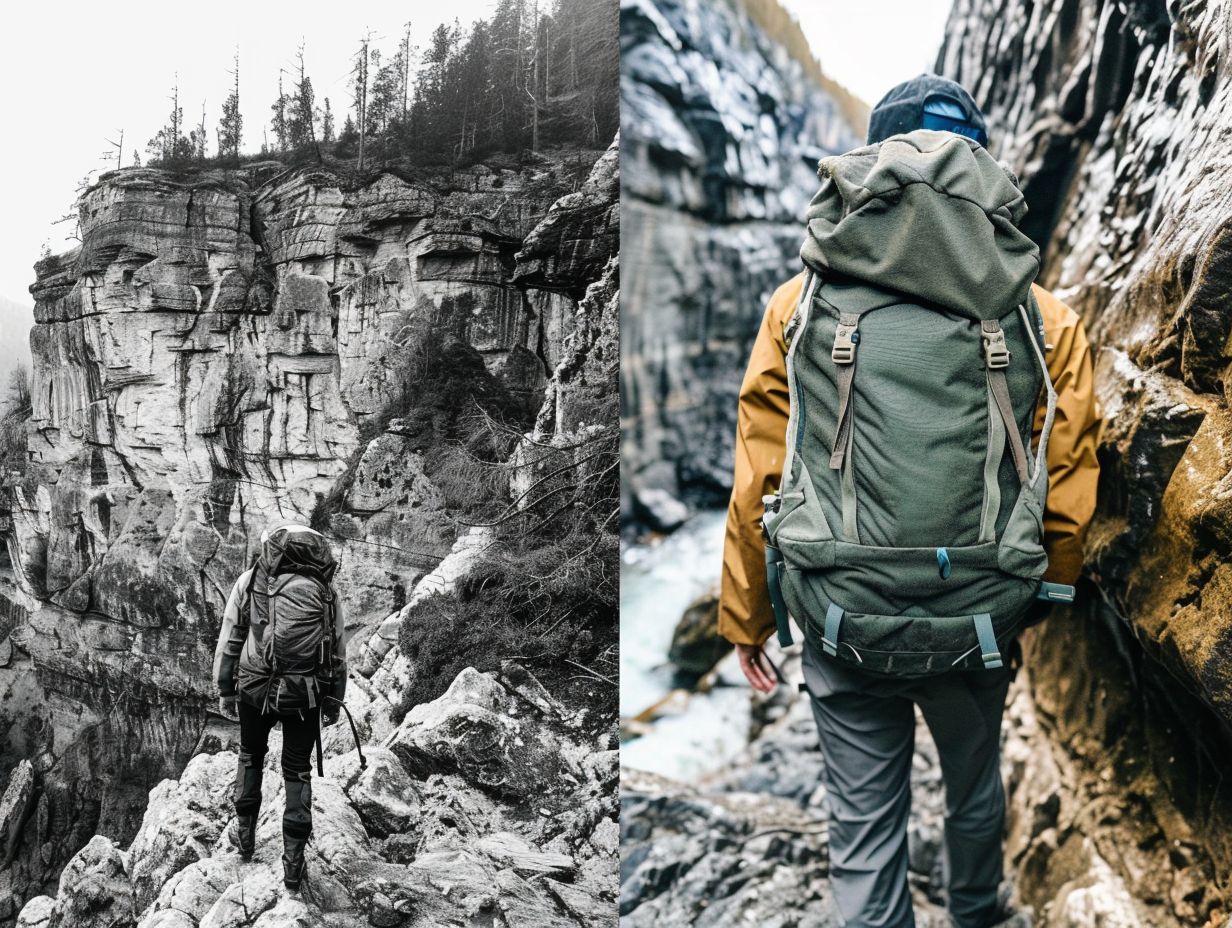
When you’re gearing up for mountaineering and hiking adventures, it’s all about selecting the right gear and equipment. You’ve got to have the essentials like backpacks, hiking boots, trekking poles, and safety gear in your arsenal.
Choosing the proper gear is key to ensuring you’re comfortable, safe, and efficient during your outdoor escapades. It’s what lets you tackle those challenging terrains with confidence and breeze.
And hey, investing in top-notch gear not only reduces your risk of injuries but also kicks your wilderness experience up a notch. Backpacks with ergonomic designs and weight distribution that’s on point help take the strain off your back and shoulders. Sturdy hiking boots give you the traction and stability you need on those rough paths. Trekking poles are there to offer you support and balance, especially when you’re facing those steep climbs and descents, easing the impact on your joints.
And don’t forget the safety gear like headlamps, first aid kits, and navigation tools. They’re your lifeline in unexpected situations, making sure you’re ready to handle emergencies like a pro while you’re out there soaking in the great outdoors.
Frequently Asked Questions
What is the difference between mountaineering and hiking?
Mountaineering and hiking are both outdoor activities that involve walking in nature, but mountaineering is a more advanced and technical form of hiking. Mountaineering usually involves climbing mountains, using specialized equipment and techniques.
Do I need different gear for mountaineering vs hiking?
Yes, mountaineering and hiking require different types of gear. Hiking usually requires comfortable clothing, sturdy shoes, and a backpack with essentials like water and snacks. Mountaineering, on the other hand, requires specialized gear such as ropes, harnesses, and crampons for climbing.
Which activity is more physically demanding: mountaineering or hiking?
Mountaineering is generally considered more physically demanding than hiking. It involves navigating steep and technical terrain, carrying heavy gear, and dealing with high altitudes. Hiking can also be physically challenging, but it is usually less strenuous than mountaineering.
Can I go mountaineering if I am an experienced hiker?
If you are an experienced hiker, you likely have some of the necessary skills and endurance for mountaineering. However, it is important to receive proper training and education specific to mountaineering before attempting it, as it requires additional technical skills and safety precautions.
Which activity is more dangerous: mountaineering or hiking?
Both mountaineering and hiking can be dangerous, but mountaineering carries more risks due to its technical nature and exposure to high altitudes. Hiking, on the other hand, can also have its dangers, such as unpredictable weather and accidents on the trail. It is important to take proper precautions and be prepared for potential risks in both activities.
Do mountaineering and hiking have similar benefits?
Yes, both mountaineering and hiking have many physical, mental, and emotional benefits. They both provide opportunities for exercise, stress relief, and connecting with nature. However, mountaineering also offers a sense of accomplishment and adventure that may not be as easily attained through regular hiking.



